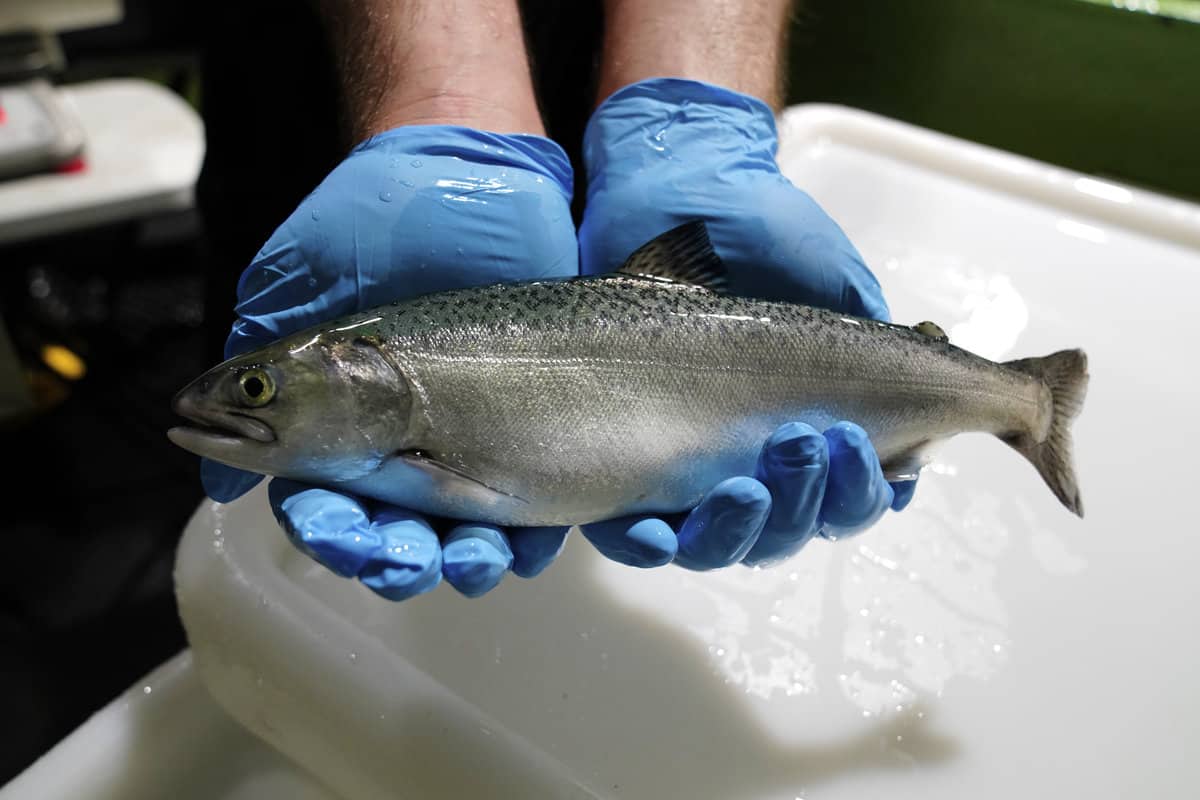Case Study: The scientific impact of Cawthron’s salmon feed conversion efficiency research
July 2021
Cawthron Institute’s ground-breaking Salmon Feed Conversion Efficiency (FCE) Research Programme was financed through MBIE’s Endeavour Fund, with research beginning in 2019 and wrapping up in 2021.
The first phase of the FCE research programme had ambitious goals: to develop indicators for healthy Chinook salmon, on farm performance and environmental interactions with a view to improving performance and efficiency. To do this, Cawthron assembled a team of scientists with expertise in a range of fields that contribute to and influence king salmon’s feed conversion including behavioural features, fish health, gut bacteria, genetics, blood biochemistry, and metabolite profiles.
After three years of research and development, the results of the Programme speak for themselves:

Development of indicators and rearing parameters – For the first time, comprehensive databases are available to farmers and fish health experts providing indicators and rearing parameters for Chinook salmon (e.g. plasma biochemistry, haematology, histology, metabolites, SNP genotypes, fatty acids, water quality), enabling them to make informed and improved decisions about how they manage their farms.
World-first diagnostic health tools – Another first delivered by this research programme is the development of diagnostic health tools (Plasma biochemistry and haematology reference intervals) that enable farmers and fish health experts to determine when and how sea temperature changes impact fish health.
Leading-edge environmental monitoring technologies – Cawthron developed monitoring tools and technologies that allow New Zealand’s marine farmers to monitor what’s happening on their farms remotely. This includes multi-array sensor deployments and the development of a buoy data platform that enables real-time access to data.
Enhancement of feeding practices – In addition to what salmon eat, how they eat is also important. Cawthron’s research into feeding regimes indicated that slightly reduced feeding may be more beneficial to salmon, and as a result some farmers have adapted feeding regimes, leading to improved efficiency.
Improved nutrient demand model for freshwater chinook salmon – Feed efficiency trials have enabled the development of this model which has been used by salmon companies to develop new, tailored diets that enhance efficiency.
Genotyping-bysequencing to form database of over 10,500 genotyped Chinook salmon – This data has broad value to New Zealand’s salmon industry, informing the development of cost-effective genomics applications for commercial breeding programmes.
Identification of risk factors for spinal curvature – This is a key issue for Marlborough Sounds farmed salmon, and a seawater tank trial at Cawthron’s multi-million dollar, purpose-built Aquaculture Park was able to identify the key risk factors (finding that this condition is heritable) and provide advice to farmers about how to implement selection programmes that should reduce in incidences of spinal curvature in future production years.
Our systems biology approach has discovered other new key differences between efficient and inefficient Chinook salmon. So far genetics, feed intake, protein turn over and lipid metabolism have been shown to play a role in making some individuals more efficient, whereas metabolic rate and the faecal microbiome so far appear less influential.
Ultimately the king salmon feed efficiency programme will equip farmers with the knowledge needed to improve on farm production, supporting the future growth of this sustainable industry. Feedback so far from farmers who have implemented some of the practices we have developed through this programme have noticed significant improvements in the feed conversion efficiency of the fish.
Looking to the future, our aim is to continue our research in a way that builds on the progress achieved so far and continues to improve the New Zealand salmon industry’s performance, profitability and sustainability. Our focus for this future research is how we can produce robust and resilient fish that can withstand some of the challenges ahead, including expansion into the open ocean, and changing climate conditions.